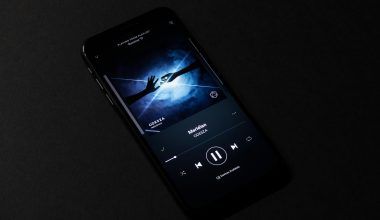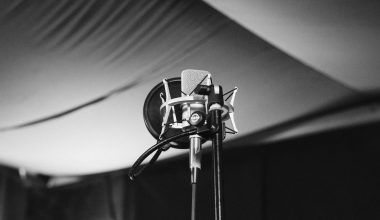If you’ve ever uploaded a video to YouTube, you’ve probably heard about copyright. But what exactly is copyright, and why is it such a big deal for YouTubers? Copyright for YouTube refers to the rules that protect content creators and prevent their work from being copied or used without permission. It’s crucial to understand these rules to avoid strikes, takedowns, and legal troubles.
In this guide, we’ll break everything down in simple terms so you can focus on creating without worrying about copyright headaches.
What is Copyright?
Copyright is a legal right given to creators to protect their original work—whether it’s a song, video, art, or even a blog. If you’ve made something, you automatically own the copyright. This means others can’t use your work without your permission.
For YouTube creators, this applies to videos, music, and even thumbnails. When someone uses copyrighted material in their video without proper rights, they risk a copyright strike.
Why is Copyright Important on YouTube?
YouTube is a platform for sharing creativity, but it’s also a business. Advertisers and viewers expect original content. Copyright ensures that creators are rewarded for their work, keeping the platform fair.
Using copyrighted material without permission can result in:
- Copyright strikes: Three strikes can lead to your channel being banned.
- Demonetization: You might lose revenue from your video.
- Takedowns: The content owner can remove your video from YouTube.
Understanding YouTube’s copyright system can help you stay on the right side of the rules and maintain a successful channel.
Common Copyright Issues on YouTube
Let’s look at some of the most common copyright problems creators face:
1. Using Music Without Permission
One of the biggest pitfalls for YouTubers is using copyrighted music in their videos. Whether it’s a background track or a popular song, it’s risky unless you have the rights.
Pro Tip: Use royalty-free music or platforms like YouTube’s Audio Library.
2. Reusing Clips or Footage
If you include clips from movies, TV shows, or other YouTubers without permission, you could face copyright claims. Even short clips can trigger a strike.
3. Thumbnails and Images
Did you know that images used in thumbnails can also be copyrighted? Always make sure you have the right to use any image you include.
How to Avoid Copyright Strikes on YouTube
To protect your channel, follow these simple steps:
1. Use Your Own Content
The best way to avoid copyright issues is to create everything yourself. Original music, footage, and graphics ensure that you own all rights to your video.
2. Get Permission
If you want to use someone else’s work, ask for their permission. This could mean paying for a license or collaborating with the creator.
3. Understand Fair Use
Fair use allows limited use of copyrighted material for purposes like commentary, criticism, or education. However, this is tricky and varies by region, so proceed cautiously.
What is YouTube’s Content ID System?
YouTube uses a system called Content ID to automatically detect copyrighted material in videos. Here’s how it works:
- When you upload a video, Content ID scans it for copyrighted material.
- If it finds a match, the copyright owner can claim your video, monetize it, or block it.
This system helps protect copyright owners but can also be frustrating for creators. That’s why it’s important to understand how it works.
Steps to Handle a Copyright Claim
If you receive a copyright claim, don’t panic! Here’s what you can do:
- Review the Claim: Check what part of your video is affected.
- Dispute if Necessary: If you believe the claim is wrong, you can dispute it.
- Edit Your Video: YouTube allows you to mute or replace the copyrighted section.
What is Copyright-Free Music?
Copyright-free music means tracks you can use without worrying about strikes. These are often available through licenses. Platforms like Epidemic Sound, Artlist, and YouTube Audio Library are great resources.
Why You Should Copyright Your Own Content
Just as you need to respect others’ copyrights, you should protect your own work. Here’s how:
- Register Your Work: While copyright is automatic, registering it legally strengthens your claim.
- Use Watermarks: Add watermarks to your videos or images to discourage theft.
- Monitor Platforms: Tools like YouTube’s Content ID help you track unauthorized use of your work.
What Happens if Someone Steals Your Content?
If someone uses your content without permission, you can:
- File a copyright complaint on YouTube.
- Use YouTube’s Content ID system to manage claims.
- Seek legal advice if necessary.
Tips for Monetizing Your Content Without Copyright Issues
Want to earn from your videos without legal troubles? Follow these tips:
- Use royalty-free assets.
- Collaborate with other creators.
- Create and sell original music or footage.
The Future of Copyright on YouTube
As YouTube continues to evolve, so do its copyright policies. With advancements in AI and better tools for creators, the platform is becoming more transparent. Staying informed is the key to navigating these changes successfully.
Final Thoughts
Copyright for YouTube might sound intimidating, but understanding the basics can save you a lot of trouble. By creating original content, respecting others’ work, and using resources wisely, you can grow your channel without worrying about strikes or takedowns.
Remember, your creativity deserves protection too. Take the time to learn about copyright, and you’ll be well on your way to YouTube success.
For further reading, explore these related articles:
- What is Music ID, and Why Do Musicians Need It?
- Designing the Perfect Singer Logo: A Complete Guide to Branding Your Music
For additional resources on music marketing and distribution, visit Deliver My Tune.






